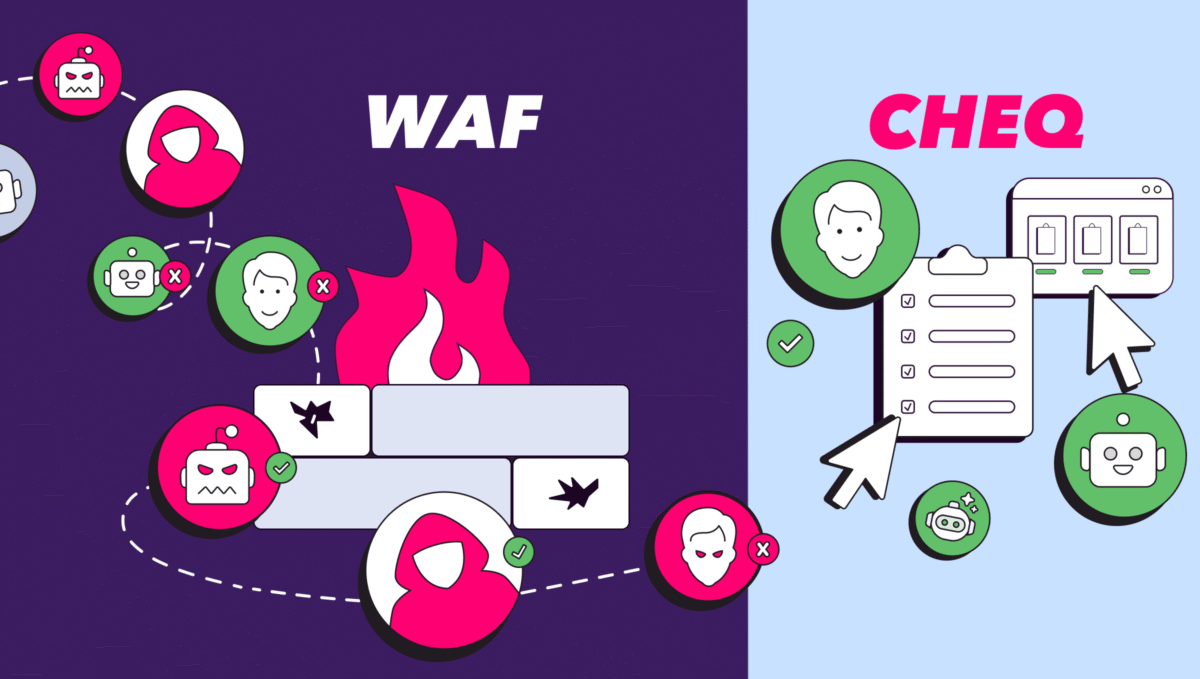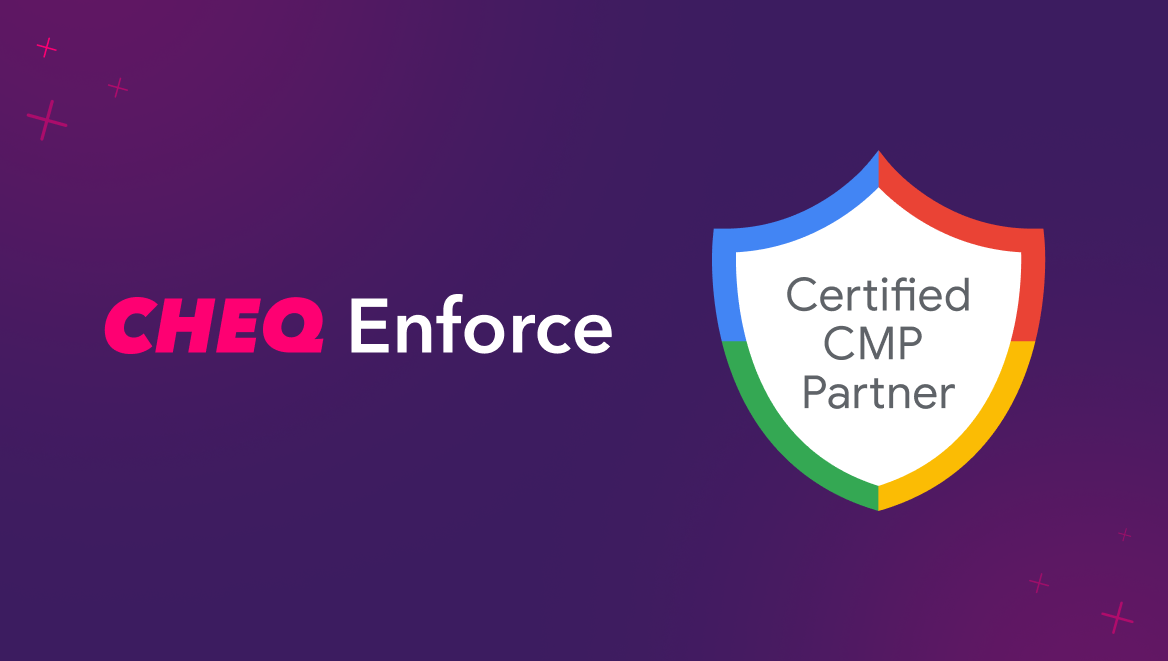Why Your Server-Side Tagging Strategy Might Not Be Enterprise-Ready (Yet)
Jamie Vinkle
|Privacy & Compliance | May 20, 2025

The Modern Data Dilemma
Enterprise digital teams are expected to deliver flawless user experiences, collect accurate analytics, and uphold data privacy—all while complying with an ever-expanding set of regulations. For many, client-side tag management has been the default approach, offering speed and flexibility when managing digital experiences at scale.
But as digital programs grow more complex, so do the requirements. Teams now face rising expectations for page performance, strict data privacy standards, and the need for centralized oversight across global operations. In these environments, traditional browser-based tagging can start to show limitations—not because it’s broken, but because it wasn’t built for this level of control.
That’s where Server-Side Tagging (SST) comes in. Unlike other solutions, CHEQ Manage is purpose-built for enterprises that need deeper visibility, control, and compliance across their digital ecosystem. It doesn’t replace client-side tagging—it complements it, offering an additional layer of security, performance, and precision for organizations that need more robust control over their data collection strategies.
Let’s take a closer look at how server-side tagging can enhance data quality, simplify governance, and support digital growth in high-stakes environments.
From Growing Needs to Growing Risks: The Financial Services Lens
Let’s explore a fictional scenario to illustrate how these challenges can unfold. Imagine a global financial institution with products spanning digital banking, credit, and wealth management. This organization is looking to unify its approach to marketing data. With multiple teams managing tags across platforms, their client-side TMS quickly becomes a patchwork of conflicting implementations.
This kind of situation is common in growing enterprises. It’s not that their original TMS setup was broken—far from it. In fact, it likely served them well for years, offering agility and quick deployment as they scaled. But as more teams, tools, and regulatory obligations enter the picture, their needs change. What they now require is a solution that scales with them—a way to manage complexity without losing visibility or performance. That’s when many organizations realize it’s time to layer in server-side tagging.
Each new marketing initiative brought requests for fresh tracking pixels, retargeting scripts, and campaign-specific vendors. Engineering teams were overwhelmed with constant implementation asks. Privacy teams were in reactive mode, reviewing tags after they were already in production. And when regulators audited data flows, they found discrepancies that couldn’t be easily explained or traced.
As new tools were layered into the browser, page speed lagged, privacy teams struggled to maintain oversight, and data quality suffered. Compliance reviews became a bottleneck, delaying go-to-market timelines. Worse, an overlooked tag configuration resulted in a data sharing violation, triggering internal investigations and eroding stakeholder trust.
This financial provider needed more than incremental improvement—it needed secure, centralized control. That’s when it began shifting toward server-side tagging.
A Healthcare Perspective: Privacy and Precision Under Pressure
Healthcare marketers walk a fine line. They need to measure portal engagement and personalize patient experiences—but without risking Protected Health Information (PHI) exposure. Client-side scripts, even vetted ones, introduce uncertainty. Libraries change. Vendors update SDKs. And compliance audits intensify.
In one case, a hospital network learned that a third-party marketing tag had started collecting unintended metadata after an automatic vendor update. Though no PHI was leaked, it forced a halt to campaign activity and a thorough risk assessment.
By shifting to a server-side tagging model, this healthcare organization isolated data collection in a secure environment. Marketing analytics, behavioral tracking, and patient education performance metrics were all routed through the server—enabling measurement without compromising PHI or triggering unnecessary regulatory risk. The result? More confident collaboration between marketing and compliance, and a faster route to innovation.
A Retail Example: Every Millisecond Counts
A global retailer preparing for Black Friday faced a familiar challenge: their meticulously optimized front end was being dragged down by dozens of marketing and analytics tags. Bounce rates were up. Conversion tracking was inconsistent. Even their fastest pages weren’t fast enough.
Marketing needed to track campaigns across affiliates, display networks, and social media. But each new pixel added friction. Pages slowed. Customers dropped. And attribution reports contradicted one another.
Server-Side Tagging became their competitive edge. By migrating critical tags server-side, they improved time-to-interaction, reduced tag execution errors, and increased attribution accuracy across paid campaigns. The result? A smoother shopping experience—and a more profitable peak season. Conversion rates rose, while analytics teams reported more consistent and reliable performance across all platforms.
What Server-Side Tagging Actually Solves.
SST empowers teams to move beyond the limitations of browser-based tracking. Here’s how:
Server-Side Tagging Benefits for Enterprise
Performance Optimization
Customers using CHEQ’s server-side environment have seen up to a 25% improvement in page load times by offloading heavy tag logic from the browser. This optimization helps improve user experience scores, reduce bounce rates, and boost organic search rankings through better Core Web Vitals.
Stronger Data Security
Limit vendor access and mitigate risk from third-party JavaScript. Server-side tags run in a contained, hardened environment, protecting sensitive data from unauthorized leakage. For industries with sensitive user data—like finance, healthcare, and education—this architecture reduces legal and reputational risk.
Improved Data Accuracy
SST enables tags to execute even after a user leaves a page—capturing more complete sessions and preserving critical attribution data. This is especially valuable in mobile contexts, where users bounce quickly, or in complex B2B journeys with multiple handoffs and delays.
Greater Flexibility and Control
Unlike black-box systems, CHEQ Manage supports any tag or API through a flexible architecture, including custom-built solutions and non-standard vendors. Whether you’re deploying a proprietary tracking script or working with a new DSP, SST allows your stack to evolve without compromise.
First-Party Data Advantage
SST improves signal strength by sending tracking data via first-party beacons. This helps avoid ad blockers and browser privacy filters—ensuring your most valuable data gets through. And because the data pipeline is fully controlled by your server, it remains compliant, exportable, and fully auditable.
How it Works with CHEQ Manage
CHEQ Manage is built for enterprise-grade server-side tagging. It integrates with your existing Martech tools and traditional TMS setup, allowing you to:
- Run a full tag audit to identify what can move server-side
- Deploy and test new configurations in parallel environments
- Maintain real-time visibility into tag execution and vendor interactions
- Meet privacy and compliance demands across all regions
Our platform offers a unified interface for marketing, engineering, and compliance teams to collaborate on data collection policies, performance optimization, and vendor governance—no more silos, no more surprises.
Why Now: The Case for Urgency
The window for reactive data governance is closing. Privacy laws like GDPR, CCPA, CPRA, and HIPAA are not only expanding, but being actively enforced. Major browsers continue to limit third-party cookies and client-side script execution. And customers themselves are growing more aware of how their data is collected and used.
Organizations that delay transitioning to server-side risk falling behind—not just in compliance, but in performance, personalization, and trust. SST is the rare opportunity to address all of these challenges with one strategic shift.
A Final Word: Why This Moment Matters
The days of freewheeling client-side experimentation are ending. With increasing regulation, browser enforcement, and user awareness of privacy, data strategy must evolve. Server-Side Tagging is no longer optional—it’s a foundational layer for digital trust, measurement integrity, and business agility.
CHEQ Manage helps organizations future-proof their data collection with a flexible, secure, and scalable SST solution.
Ready to Modernize Your Tag Strategy?
Learn how CHEQ Manage can help you improve performance, enforce privacy, and centralize vendor control across your digital properties. Book a time to chat with us today.

















